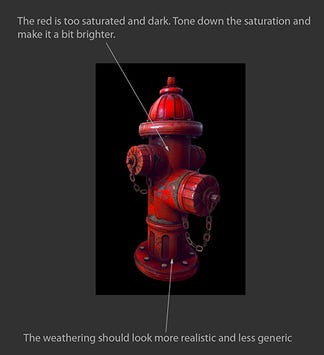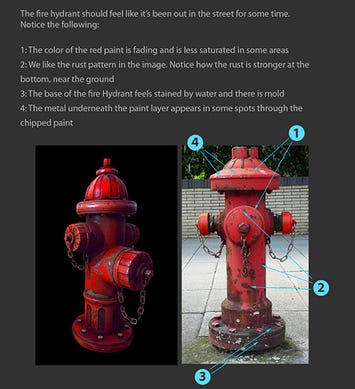Trending
Opinion: How will Project 2025 impact game developers?
The Heritage Foundation's manifesto for the possible next administration could do great harm to many, including large portions of the game development community.
Outsourcing art is a common practice among game developers, but as with any outsourced relationship, difficulties can stall production. By putting effective communication strategies in place, clients can ensure the final product meets their expectations.

Outsourcing art to external vendors is a common practice among game developers, but as with any outsourced relationship, difficulties can postpone delivery and stall production. By putting workable, effective communication strategies in place, clients can reduce delays and ensure the final product meets their exact specifications.
Challenges: Merging Cultures, Working Remotely and Accounting for Production Time
Though art outsourcing can be both cost-effective and time-efficient, there are three central challenges that studios face when assigning projects.
First, art has subjective value. Art with Western cultural influences is analytical. The Western concept of beauty is rooted in the Greek canon and based on mathematics. Eastern art is starkly different. Its central goal is to evoke feeling in the viewer. While this is a broad generalization of two cultures, it is true that an artist used to Eastern style can find it difficult to produce authentic Western art and vice versa. However, when vendors have a willingness to learn and studios take the time to offer the precise instructions needed, clients enjoy genuine results.
Secondly, it can be challenging to work with an outsourced team located in a remote destination that makes in-person meetings impractical. Without the ability to review the work face-to-face, teams must make documented, detailed feedback a high priority, providing answers to all vendor questions as soon as possible.
Finally, when outsourcing work to a new art vendor, the artists’ creative process must be respected. They will not know the full scope of what is expected until they are taught the style and direction of the project. As they progress through the learning process, production will pick up speed as well, so there is a need for patience initially while the vendor acclimates to the project.
Modern outsourcing relationships can function flawlessly and these three challenges can be overcome when the following communication solutions are put into practice.
Learn the Vendor’s Process
It’s worth it for the client to take the time to understand the art team’s structure on the vendor’s side. Who will be relaying instructions and messages to the rest of the artists? Who will be passing along feedback? This is especially important for clients who are looking to partner for long-term projects. Even if an in-person meeting cannot be arranged, web meetings through Skype and other applications can help the client establish a relationship with the point person at the art vendor’s studio, ensuring communication goes through the proper channels.
Provide Concise, Clear Direction
Clients should recognize the difference between internal and external art studios. It is not effective to pass along a large art bible, where the information the external team needs is buried and scattered. This will be difficult for the vendor to read and absorb in a reasonable amount of time.
Instead, spend time creating concise briefs for each asset. Condense the information so the team only has to read what is necessary, but make sure the instructions are very precise. Avoid writing broad statements that can be left open to interpretation.
For example, if assigning a batch of similar assets, organize the brief for easy comprehension. On one section of the sheet, list the principles that apply to all assets. In a subsequent section, list concepts that apply to specific assets. This is helpful for both the artist, the team lead and the client. The artist can quickly reference the brief during the creative process, the team lead can check that each asset was created to spec, and the client can quickly review that production was carried out based on the information provided.
Offer Education and Allow for Ramp-Up Time
Art vendors starting work on a new project with a new company must be allowed time to adjust to the expectations, especially if they are learning how to adapt to the client’s desired style. Clients can help by making members of their internal art team available to answer questions and provide direction on specific points. Training helps increase production time and as vendors gain experience, there will be less mistakes and faster delivery.
Give Immediate, Well-Defined Feedback
Good vendors will openly accept feedback and will proactively ask for guidance as the project progresses. This is the stage where a communicative relationship is the most important. Clients must be available for questions and be willing to offer constructive critiques so the vendor has definitive answers. Immediate replies are a major assistance for vendors who are eager to meet and exceed client expectations.
Fictional Scenarios: Put Communication Strategies into Practice
As an example, here are four scenarios where effective communication can improve the works in progress.
Example #1:
A streamlined asset brief that follows the concepts outlined above.
At first glance, this may seem like a simple asset, but there are a fairly large number of technical checks that must be made to ensure accuracy.
Example #2:
As the technical complexity increases, so does the risk for errors. Establishing a system to go over each technical check will help keep all parties involved in tune to the project’s progression.
The client and vendor can collaborate at creating a checklist that details each step that must be completed, giving the vendor a clear direction for the assets. When the asset is delivered, the documentation can be passed to the internal team for approval.

Example #3:
When feedback is given, it should not contain any broad statements. This can result in misunderstandings that lead to further revisions and additional time spent on an alteration that could have been corrected quickly if feedback had been more detailed.

Even though this type of feedback might seem straightforward, it can still elicit questions in the mind of the artist. How much should the red be de-saturated? Why is that necessary? What kind of weathering is the client looking for? Would they like graffiti, scratches or dust?
Example #4:
Using arrows and numbers are effective ways to offer feedback. When entering text, make sure it can be edited in case you are working with a team that does not speak your language. Editable text will allow it to be translated for their benefit.

Whenever possible, try to include a photo reference of your vision to provide the vendor with a baseline. If a photo is not available, a drawing can also be effective. Clear explanations are key to helping vendors avoid repeating the same mistakes.
In conclusion, establishing a productive relationship with an outsourced art vendor will require gaining an understanding of their work process, offering precise directions, allowing the vendor to learn through gradual education and guiding the work with honest, practical feedback. When these communication strategies are used, the outsourcing process is streamlined, efficient and fruitful.
Read more about:
BlogsYou May Also Like